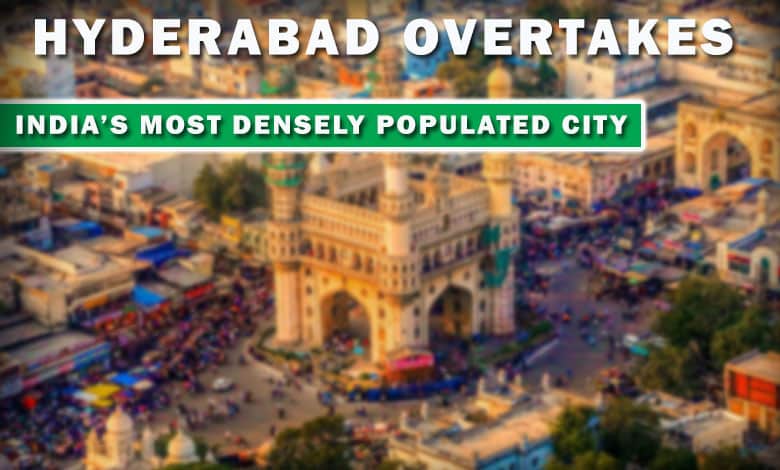Hyderabad Overtakes Delhi as India’s Most Densely Populated City: Growth, Challenges, and Future
Hyderabad’s population density hits 18,161 per sq km, surpassing Delhi. Discover the factors behind this surge, infrastructure strains, and what it means for Telangana’s future.

Hyderabad: Hyderabad has overtaken Delhi as India’s most densely populated city, with 18,161 people per square kilometer compared to Delhi’s 11,313, according to the Telangana Statistical Abstract (ATLAS)-2024.
This milestone underscores Hyderabad’s rapid urbanization and its emergence as a magnet for professionals, students, and entrepreneurs.
Table of Contents
Hyderabad Surpasses Delhi in Population Density
Key Statistics at a Glance
- Hyderabad: 18,161 people/sq km
- Delhi: 11,313 people/sq km
- Mumbai (India’s densest): 28,508 people/sq km
- Manila (global leader): 43,079 people/sq km
What’s Driving Hyderabad’s Population Surge?
Hyderabad’s booming tech sector, cultural vibrancy, and business opportunities have fueled its growth. The city’s IT corridors, historical landmarks, and educational institutions attract migrants nationwide, contributing to a 6.7% annual population increase in recent years.
Growth Drivers:
- Tech Hub: Home to global IT giants and startups.
- Employment: Over 500,000 jobs created in the last decade.
- Education: Premier institutions like IIIT-Hyderabad and T-Hub.
Challenges of Rapid Urbanization
While growth signals economic vitality, it strains infrastructure, housing, and public services. Urban planners warn of escalating pressures:
- Housing Shortages: Demand outstrips supply, raising property prices by 64% since 2019.
- Traffic Congestion: Road networks struggle to keep pace with rising vehicle ownership.
- Resource Strain: Water scarcity and air quality issues loom, mirroring Bengaluru’s challenges.
Telangana’s Demographic Divide
Hyderabad’s density contrasts sharply with Telangana’s overall low population density of 312 people/sq km. The state faces a demographic shift:
- Aging Population: By 2031, residents aged 60+ will rise by 60%, while the under-5 population drops by 25%.
- Economic Implications: Reduced youth workforce may affect funding for development programs.
Experts emphasize the need for strategic urban planning to address:
- Affordable Housing: Expanding vertical development and satellite towns.
- Public Transport: Accelerating metro and suburban rail projects.
- Resource Management: Rainwater harvesting and pollution control.
Hyderabad’s rise as a densely packed metropolis highlights both its potential and vulnerabilities. Without proactive measures, the city risks repeating the infrastructure crises seen in Mumbai and Delhi.
Hyderabad’s population milestone is a double-edged sword. While it cements the city’s status as a growth engine, sustainable policies are critical to ensure its infrastructure and resources can support future demands. The coming decade will test Telangana’s ability to balance urban expansion with equitable development.
